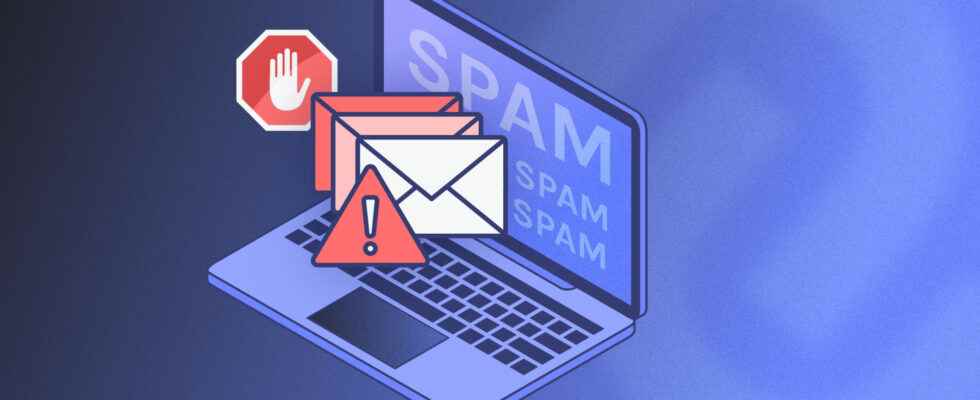Spam is unwanted mail sent for advertising or malicious purposes. It is a frequent vector of phishing, so it is better to avoid clicking on the links and attachments of this type of mail.
How does spam work?
Spam is unwanted mail, also called spam, that is to say an unsolicited email or SMS, sent for advertising or malicious purposes. It can simply consist of commercial prospecting – which would not respect the legal obligations of obtaining the consent of the recipients – or outright attempt to scam the recipient, by fraudulent tricks to earn money or by trying to make him click on phishing links. It is then a question of extracting sensitive data from the user, or of distributing viruses.
Where does spam come from?
Originally, the word “SPAM” is a registered trademark meaning “Spiced Pork And Meat”. It was canned pre-cooked meat supplied to American soldiers during World War II and quickly derided by comedian Pierre Dac and then by the Monthy Pythons. In one skit, the Brits end up in a cafe where SPAM ends up in every item on the menu. It is so present that the characters invent a song in which they repeat the word constantly: “spam, spam, spam, spam”… exactly as in the early days of the net, when Internet users began to copy and paste the same text to many times on forums, sometimes in the same thread, or when they repeatedly send unwanted emails.
Is spam illegal?
If you receive emails from services for which you have not requested anything or which have attachments intended to trick you, these communications may correspond to several violations of the Consumer Code or the Penal Code. Canvassing without prior consent, deceptive commercial practices (a recipient who pretends to be a brand you know, for example), deception and fraud are all offenses that could, depending on the case, be held against spammers.
How to deal with spam?
There are several ways to combat this phenomenon. Upstream, only communicate your email address when necessary. To limit the messages that reach your mailbox, you can use a filter or anti-spam software – the latter are offered directly by antivirus providers. Webmails also have their own filters, to intercept them before reaching the inbox.
To reduce the amount of unwanted emails received, you can unsubscribe from subscription lists and close accounts you have opened with services or websites that you no longer frequent: this should limit the sharing of your data with third parties .
In any case, remember that spam is an important vector for phishing: do not click on links and do not download attachments from suspicious sources. Also refrain from filling out a form that is behind a link, especially if you are asked over the headings to deliver sensitive information.
If in doubt, you can hover your mouse – without clicking, again – on the link that asks you. This will display the target address at the bottom left of your browser and allow you to check if it looks legitimate. It only works if you go through a computer. With a smartphone or tablet, the mouse cursor is not available.
Also help yourself with the tools provided by your mailbox: you can mark spam as “junk”, and also create rules to filter and delete messages that are too invasive or even block recalcitrant senders. You can also report these untimely mails to Signal Spam, which works with the CNIL.
If you receive spam by SMS, you can try to reply STOP so that your number is, theoretically, removed from the mailing lists. Alternatively, you can forward messages to 33700, which fights both unwanted text and voice messages on the phone.
